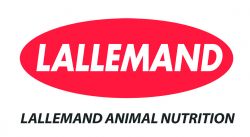
By now, you’ve opened up your new crop silage. This is a good time to assess both the silage — and the management decisions that got it there. Deciding what went right, and what went wrong, is helpful to ensuring an even better 2021 silage season.
Most silage challenges fall into one of two categories: dry matter (DM) loss or aerobic instability.
DM loss, or “shrink,” results in less available, and less high-quality, feedstuffs. This can occur due to many management factors but can be addressed by:
- Harvesting at the right moisture and stage of maturity
- Cutting at the correct length and with adequate processing (if necessary)
- Using a proven inoculant to fit your needs
- Packing tightly
- Sealing the storage structure
Aerobic instability — often seen as heating — contributes to silage losses by leaving producers with spoiled feed that must be thrown out. In addition, heating normally reduces the forage’s nutritive value. Aerobic spoilage is caused by yeast growth in the majority of the cases. Yeasts need oxygen to grow, making the above management missteps likely suspects when there is heating, especially inadequate packing and sealing. Silages with high population of yeasts have lower nutrient digestibility (fiber, DM), and this leads to reduced animal intakes and performance.
At feedout, when silage is again exposed to air, spoilage yeasts “wake-up” and can grow rapidly, causing heating and spoilage. At this stage, common management practices can help reduce losses, including:
- Keeping the silage surface tight and clean
- Not removing silage too far ahead of feeding and leaving it sitting in loose piles, and/or
- Feeding out at the correct rate
Inoculant choices can help address both DM loss and aerobic spoilage. For example, elite lactic acid bacteria and enzymes, like those found in MAGNIVA® Titanium forage inoculant, can maximize dry matter, nutrient retention and improve aerobic stability to deliver stable, high quality and palatable feed.
Forage inoculants including Lactobacillus buchneri NCIMB 40788 will be more resistant to heating and spoilage as this organism dramatically reduces yeast levels. L. buchneri 40788 applied at a minimum of 400,000 CFU per gram of silage, or 600,000 CFU per gram of high-moisture corn (HMC), has been uniquely reviewed by the FDA and allowed to claim improved aerobic stability.
By taking a critical look at this year’s silage, producers will be on their way to even better silage results next year.





